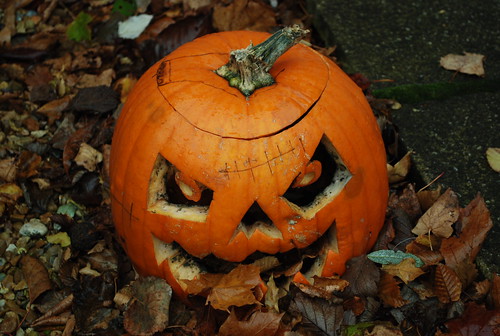 Hallowe'en Party is a crime story by Agatha Cristie featuring "Hercule Poirot, the renowned Belgian detective". I picked it up because a friend of my daughter was reading it, and finished it that day.
Hallowe'en Party is a crime story by Agatha Cristie featuring "Hercule Poirot, the renowned Belgian detective". I picked it up because a friend of my daughter was reading it, and finished it that day.Pros: well, there's a mystery to solve. And there's some (rather heavy handed) social commentary. And there's a wonderful girl called Miranda in it, just as there is in reality.
Cons: its all rather formulaic. Though to be fair, calling an Agatha Christie formulaic is like calling peas green.
I won't describe the story; wiki has done that. Its a variant on the mansion-house-murder theme, where there are a carefully limited supply of suspects. There is one nice twist (see footnote 1) but otherwise the identity of the murderer (see footnote 2) isn't too hard to see.
Things that are objectionable:
1. Superintendent Spence, a retired police officer, just happens to have settled nearby. Blimey, that's a bit of a co-incidence, no? And an essential one: not only does he short-circuit the evidence gathering, he also provides an entree for Poirot to people who would otherwise not have talked to him.
2. Although the investigating detective is nominally Poirot, nothing in the book depends on this, or reflects on it in any way. In particular, the thoughts and reactions of the detective to the social situations he comes upon are completely un-Belgian; they are in fact the thoughts of a well-brought-up-Englishwoman, viz Agatha Christie. Or, put another way, the book would have been better as a Miss Marple story. This includes the way he looks at houses, gardens, interiors, people. I object to this because its part of the "formulaic"ness of the book; its really a storyline / plot, with generic characters inserted to fill it out. The detective might just as well have been called X and the characters A, B, C and so on (indeed the children sort-of are; there was an Ann, a Beatrice, and I forget the others but I think a C too).
3. There's some social commentary; after all a child has been murdered, and although she is careful to point out that no sexual assault took place, the crime places that and similar ideas in our minds. Many of the characters rabbit on, in a not entirely convincing way, about how the world has been getting worse recently. And there's stuff about how nutters who should have been locked up are at large; possibly this was a political issue in 1969 when the book was written. And then, it turns out that two slightly dodgy teenage boys are the saviours of Miranda, even though they wear red velvet jackets. Or something; I forget the details. Anyway, my point is that's all a bit heavy handed.
So, there you have it. Perhaps I ought to try reading an early Poirot, and see if its any better. By contrast, I recall reading a Maigret ("Maigret au Picratt's", and yes I was pleased with myself for reading it in the original French) which was full of character.
Footnotes
1. The one nice twist is that Joyce really is a liar. We're all set up to believe that this one time she actually told the truth - about witnessing the murder - but it turns out she was lying about that too.
2. Murderers, of course, but I didn't want to say that in the main text.